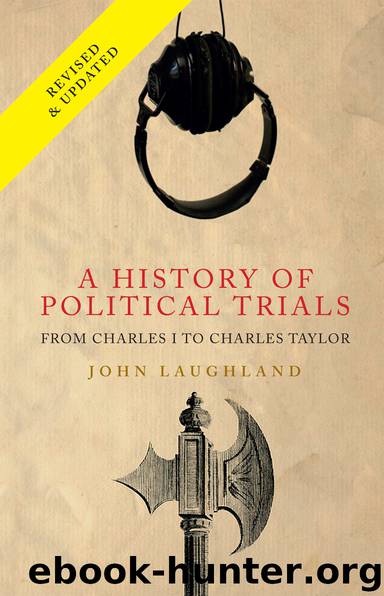A History of Political Trials by Laughland John

Author:Laughland, John.
Language: eng
Format: epub
Publisher: Peter Lang AG
Published: 2016-01-21T16:00:00+00:00
| 187 →
14 Revolution Returns: the Trial of Nicolae Ceauşescu
The trial and execution of the Romanian dictator, Nicolae Ceauşescu, and his wife, Elena, on 25 December 1989 compressed into a short space of time many of the events which have typified trials of heads of state throughout history: violent revolution; a cathartic trial to judge and anathematize the deposed head of state; and a swift and brutal death. The fact that it was all broadcast live on television – when the entire Western world was sitting at home enjoying Christmas – ensured that the events received maximum publicity. They provided a real-time insight into the sorts of passions which have driven political trials in the more distant past.
Yet the Ceauşescu trial also fired the starting gun for a regrettable trend. The principal charge brought against him by the kangaroo court hastily convened to execute him was for genocide. This same charge of genocide was to be decisive in the trials of the former Bolivian president García Meza Tejada (who, accused of it in January 1989, was convicted in 1993 of genocide for the massacre of eight people); General Pinochet of Chile (originally arrested in 1998 for genocide of under a hundred people); Colonel Mengistu of Ethiopia (who was convicted in absentia for genocide in 2006, just as political opponents of the new Ethiopian regime, including human rights activists, also found themselves prosecuted for genocide); Jean Kambanda of Rwanda (convicted of genocide without trial in 1998); and Slobodan Milošević (accused in 2001 of complicity in genocide in Bosnia in 1995). Unfortunately, in an age in which the Nazi Holocaust became the supreme (negative) moral reference point for Western societies, the ‘universal’ crime of genocide seems in danger of being debased as a legal concept, the very magnitude of the crime itself encouraging prosecutors to believe that it is a ‘magic bullet’ and that almost any killing can come under this category. ← 187 | 188 →
Ceauşescu’s overthrow was the dramatic and bloody culmination of a series of stunning coups against Communist leaders all over Eastern Europe in the autumn of 1989. One by one, men who had governed their Warsaw Pact countries for decades were swept aside in what commentators welcomed as ‘people’s revolutions’. The process started when the Communist government of Hungary opened its border with Austria, thereby allowing hundreds of thousands of East German tourists on holiday near Lake Bálaton to drive to the West. A trickle turned into a flood: the first tourists arrived in West Berlin in early September, while thousands sought refuge in the West Germany embassy in Prague. The East German leader Erich Honecker (himself to face trial in 1992) was overthrown by his comrades in October, and they (or their masters in Moscow) ordered the Berlin Wall itself to be opened on the night of 9 November 1989 – the anniversary of both the revolution against the German emperor in 1918 and the Reichskristallnacht in 1938.
One by one, the bulwarks of the post-war Communist regime in Eastern Europe followed.
Download
This site does not store any files on its server. We only index and link to content provided by other sites. Please contact the content providers to delete copyright contents if any and email us, we'll remove relevant links or contents immediately.
The Secret History by Donna Tartt(18840)
The Social Justice Warrior Handbook by Lisa De Pasquale(12141)
Thirteen Reasons Why by Jay Asher(8791)
This Is How You Lose Her by Junot Diaz(6778)
Weapons of Math Destruction by Cathy O'Neil(6139)
Zero to One by Peter Thiel(5684)
Beartown by Fredrik Backman(5594)
The Myth of the Strong Leader by Archie Brown(5421)
The Fire Next Time by James Baldwin(5246)
How Democracies Die by Steven Levitsky & Daniel Ziblatt(5127)
Promise Me, Dad by Joe Biden(5087)
Stone's Rules by Roger Stone(5026)
100 Deadly Skills by Clint Emerson(4840)
A Higher Loyalty: Truth, Lies, and Leadership by James Comey(4840)
Rise and Kill First by Ronen Bergman(4701)
Secrecy World by Jake Bernstein(4640)
The David Icke Guide to the Global Conspiracy (and how to end it) by David Icke(4624)
The Farm by Tom Rob Smith(4434)
The Doomsday Machine by Daniel Ellsberg(4415)
